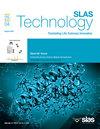Analysis of the Efficacy of Invasive Mechanical Ventilation in ICU Patients with Severe Heart Failure
IF 3.7
4区 医学
Q3 BIOCHEMICAL RESEARCH METHODS
引用次数: 0
Abstract
In order to study the clinical treatment effect and analyze the main clinical effects of invasive mechanical ventilation in ICU patients with severe heart failure, this paper proposes a efficacy analysis method based on invasive mechanical ventilation for ICU patients with severe heart failure. This study used a retrospective analysis to select 50 patients with severe heart failure admitted to the ICU of a certain hospital from January 2021 to March 2022 as the research subjects, divided into a control group and an observation group. The control group received conventional treatment methods, while the observation group received invasive mechanical ventilation treatment in addition to conventional treatment, and a nursing quality index system was constructed to verify the feasibility and scientificity of the treatment plan. The research results showed that the treatment effectiveness rate of the observation group was 96%, significantly higher than the control group's 84%. In addition, the arterial oxygen saturation (SaO ₂) and partial pressure of oxygen (PaO ₂) in the observation group were significantly increased after treatment compared to the control group, while the partial pressure of carbon dioxide (PaCO ₂) was lower (P<0.05). In addition, in order to improve the comprehensiveness of the analysis, this study further explored the epidemiological characteristics of patients with severe heart failure, including the influence of age, complications (such as diabetes, hypertension, etc.), course characteristics and other factors on the treatment effect. At the same time, an in-depth analysis was conducted on the application strategies of invasive mechanical ventilation in the treatment of severe heart failure, including airway management, ventilator mode optimization, complication prevention, and nursing measures. In addition, this study compared the applicability of invasive and non-invasive mechanical ventilation in the treatment of severe heart failure patients and evaluated the impact of different mechanical ventilation strategies on patient prognosis. To sum up, this study shows that invasive mechanical ventilation can significantly improve the treatment effect of patients with severe heart failure in ICU, improve the oxygenation level and reduce carbon dioxide retention, while optimizing the quality of care and improving the survival rate. The conclusion of this study provides a reference for clinical practice and proposes exploration directions for further optimizing mechanical ventilation strategies in the future.
重症监护病房重症心力衰竭患者有创机械通气疗效分析
为了研究ICU重症心力衰竭患者有创机械通气的临床治疗效果,分析有创机械通气的主要临床效果,本文提出了一种基于有创机械通气的ICU重症心力衰竭患者疗效分析方法。本研究采用回顾性分析的方法,选取2021年1月至2022年3月在某医院ICU收治的50例重症心力衰竭患者作为研究对象,分为对照组和观察组。对照组患者给予常规治疗方法,观察组患者在常规治疗的基础上给予有创机械通气治疗,并构建护理质量指标体系,验证治疗方案的可行性和科学性。研究结果显示,观察组治疗有效率为96%,显著高于对照组的84%。观察组治疗后动脉血氧饱和度(SaO₂)和氧分压(PaO₂)较对照组显著升高,二氧化碳分压(PaCO₂)较对照组降低(P<0.05)。此外,为了提高分析的全面性,本研究进一步探讨了重症心力衰竭患者的流行病学特征,包括年龄、并发症(如糖尿病、高血压等)、病程特征等因素对治疗效果的影响。同时,深入分析有创机械通气在重症心力衰竭治疗中的应用策略,包括气道管理、呼吸机模式优化、并发症预防、护理措施等。此外,本研究还比较了有创机械通气与无创机械通气在重度心力衰竭患者治疗中的适用性,评估了不同机械通气策略对患者预后的影响。综上所述,本研究表明,有创机械通气可显著提高ICU重症心力衰竭患者的治疗效果,提高氧合水平,减少二氧化碳潴留,同时优化护理质量,提高生存率。本研究结论为临床实践提供了参考,并为今后进一步优化机械通气策略提出了探索方向。
本文章由计算机程序翻译,如有差异,请以英文原文为准。
求助全文
约1分钟内获得全文
求助全文
来源期刊

SLAS Technology
Computer Science-Computer Science Applications
CiteScore
6.30
自引率
7.40%
发文量
47
审稿时长
106 days
期刊介绍:
SLAS Technology emphasizes scientific and technical advances that enable and improve life sciences research and development; drug-delivery; diagnostics; biomedical and molecular imaging; and personalized and precision medicine. This includes high-throughput and other laboratory automation technologies; micro/nanotechnologies; analytical, separation and quantitative techniques; synthetic chemistry and biology; informatics (data analysis, statistics, bio, genomic and chemoinformatics); and more.
 求助内容:
求助内容: 应助结果提醒方式:
应助结果提醒方式:


